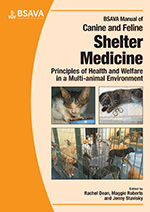
Full text loading...

This chapter considers what can be achieved through the use of metrics and provides real-world examples and guidance around how to begin using them. This is a similar process to clinical audit, with the aim of identifying where improvements can be made and tracking the success or failure of initiatives to boost performance.
Shelter metrics, Page 1 of 1
< Previous page | Next page > /docserver/preview/fulltext/10.22233/9781910443330/9781910443330.7-1.gif

Full text loading...








